Testing the first prototype…..
Developing a low-cost instrument to track marine animals can be challenging. The instruments most used for this purpose are the Argos satellite transmitters, but they are very expensive and, in some cases, imprecise in estimating the real position of the animal. The instrument I want to develop would use a channel different from satellite to send the GPS positions of the animal, such as the GSM network (the same one used by our mobile phones).
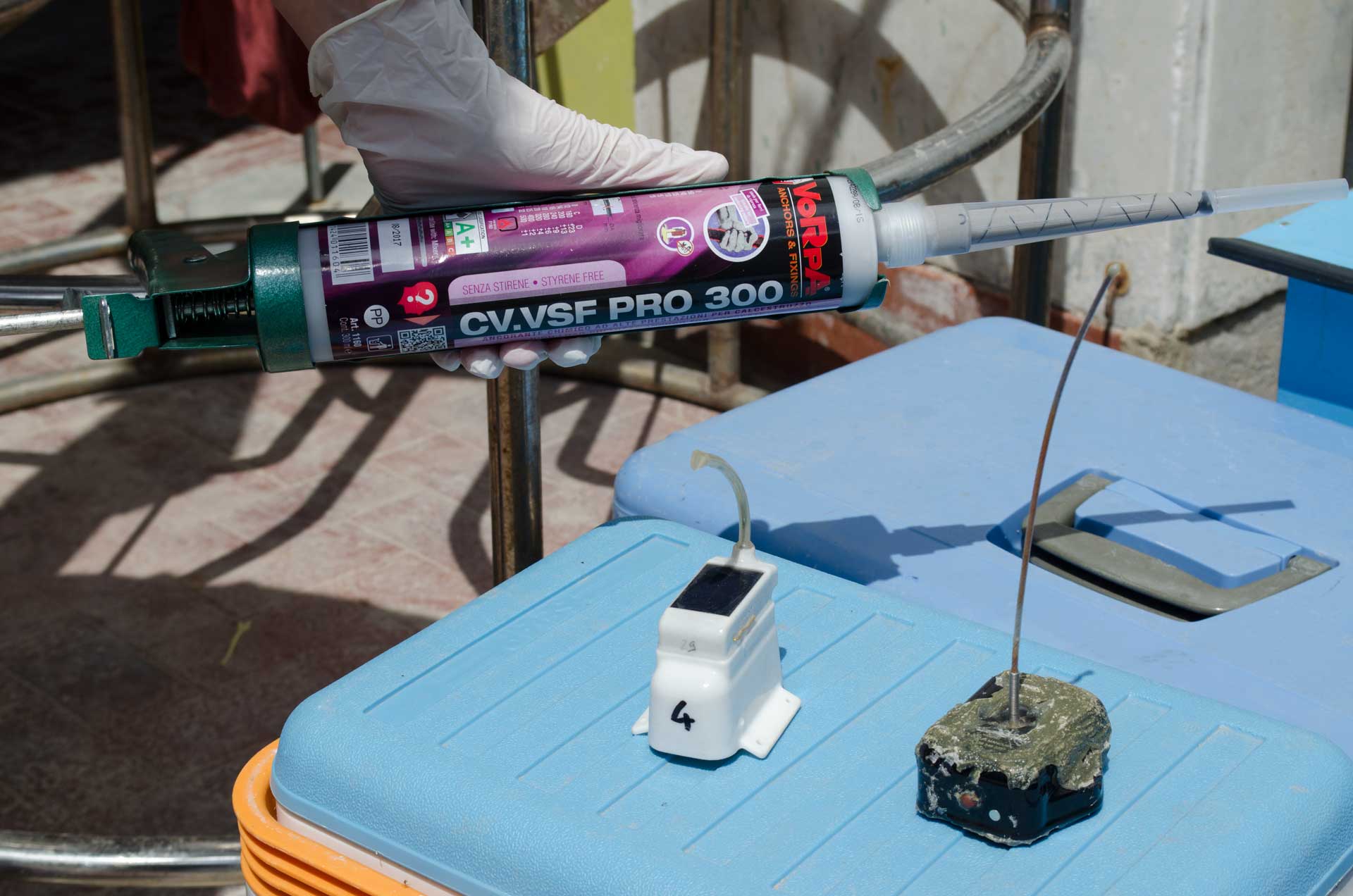
The two instruments to be applied on the turtle. On the left: the GPS-GSM logger, which has a solar panel on top and the GSM’s antenna. On the right: the Argos transmitter; this instrument is a recycled transmitter, it was retrieved a month later after being attached on another sea turtle released in Tuscany. Photo © Dimitri Giunchi
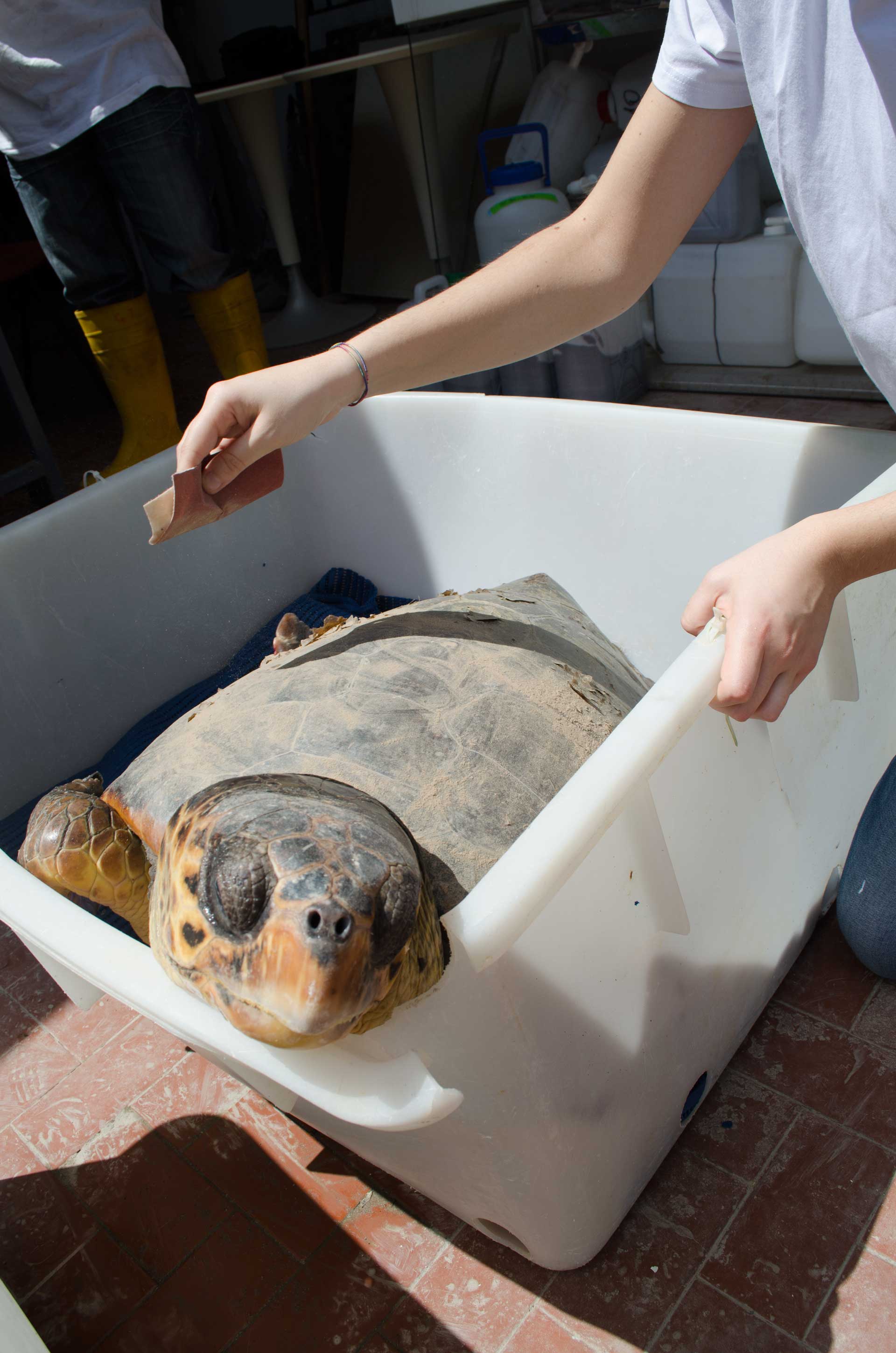
Giulia had to prepare the carapace of the turtle before the attachement, as she was cleaning the carapace with sandpaper, the turtle was trying to escape! Photo © Dimitri Giunchi
Before the SOSF project started, I had already started developing this idea and, thanks to funding of the University of Pisa, I bought two data loggers GPS-GSM prototypes. These instruments have been produced by ECOTONE, a Polish company, and are instruments firstly developed for birds and have been adapted to work also in the sea. The prototypes have a solar panel on the top, to recharge the batteries, and are equipped with a salt-water switch that switches-off the instrument when underwater, in this way we can save battery power.
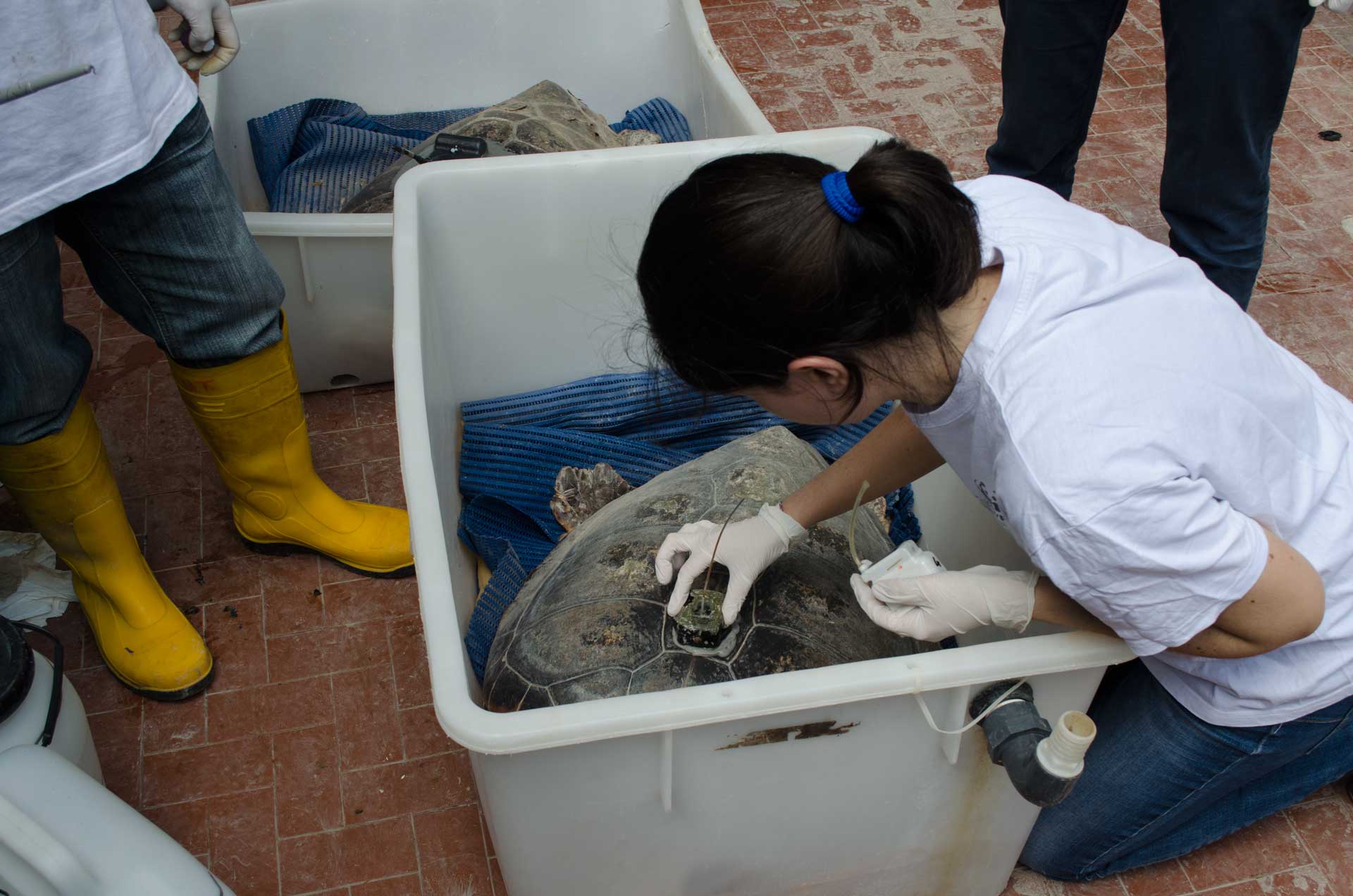
Giulia applying the Argos transmitter to the resin base on Marco Dalla
The 4th of June we deployed one of these GPS-GSM loggers on a sea turtle together with a conventional Argos satellite transmitter (PTT -Platform Transmitter Terminal). You may think, “How many things are you attaching to this poor turtle?”, but I can assure you that the animal chosen for the release was quite big and so could easily stand the weight of both instruments, which appeared as a small backpack. Moreover, also deploying an Argos satellite transmitter meant that we could have an idea on where the turtle is, should the GPS-GSM logger fail to work.
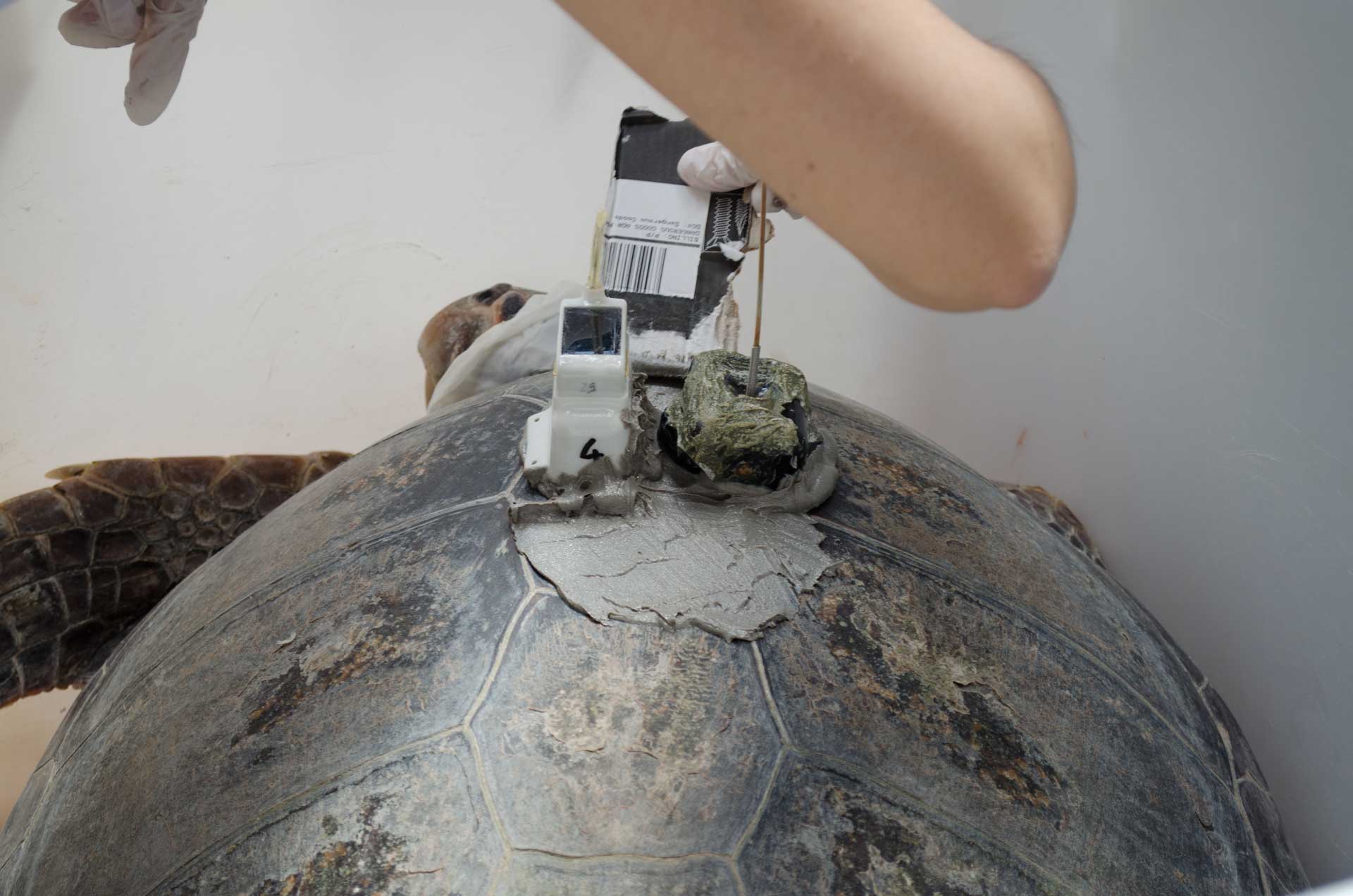
Giulia laying the resin after attaching both instruments. On the left the GPS-GSM logger; on the right the Argos transmitter. Photo © Dimitri Giunchi
For the deployment and for the release of the turtle, we collaborated with the Anthon Dohrn Zoological Station in Naples and, in particular, with Dr. Sandra Hochscheid, head of the Aquarium Unit of the Zoological Station, who is an expert on sea turtle tracking systems, like data loggers and satellite transmitters.
The turtle released with the prototype is called Mario Dalla and is an adult male of 73 cm CCL (Curved Carapace Length). He was accidentally captured by fishermen and brought to the turtle recovery center in the Zoological Station, where he was rehabilitated.
To release the turtle we went to Marina del Cantone in the Marine Reserve of Punta Campanella (Naples), where the turtle was captured in the first place. Mario Dalla was released from a boat in the beautiful sea of the Salerno Gulf.
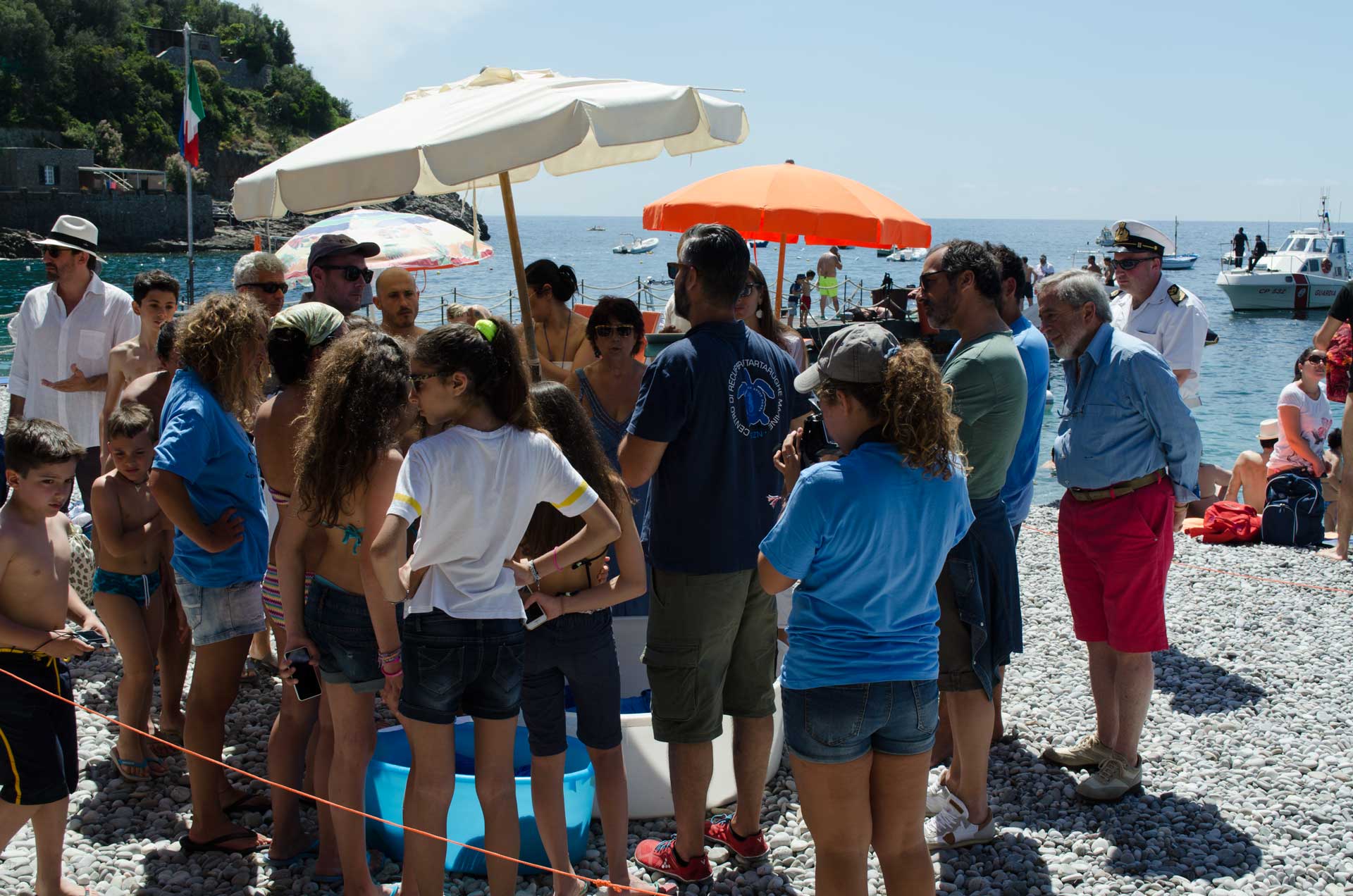
Photo © Giulia Cerritelli
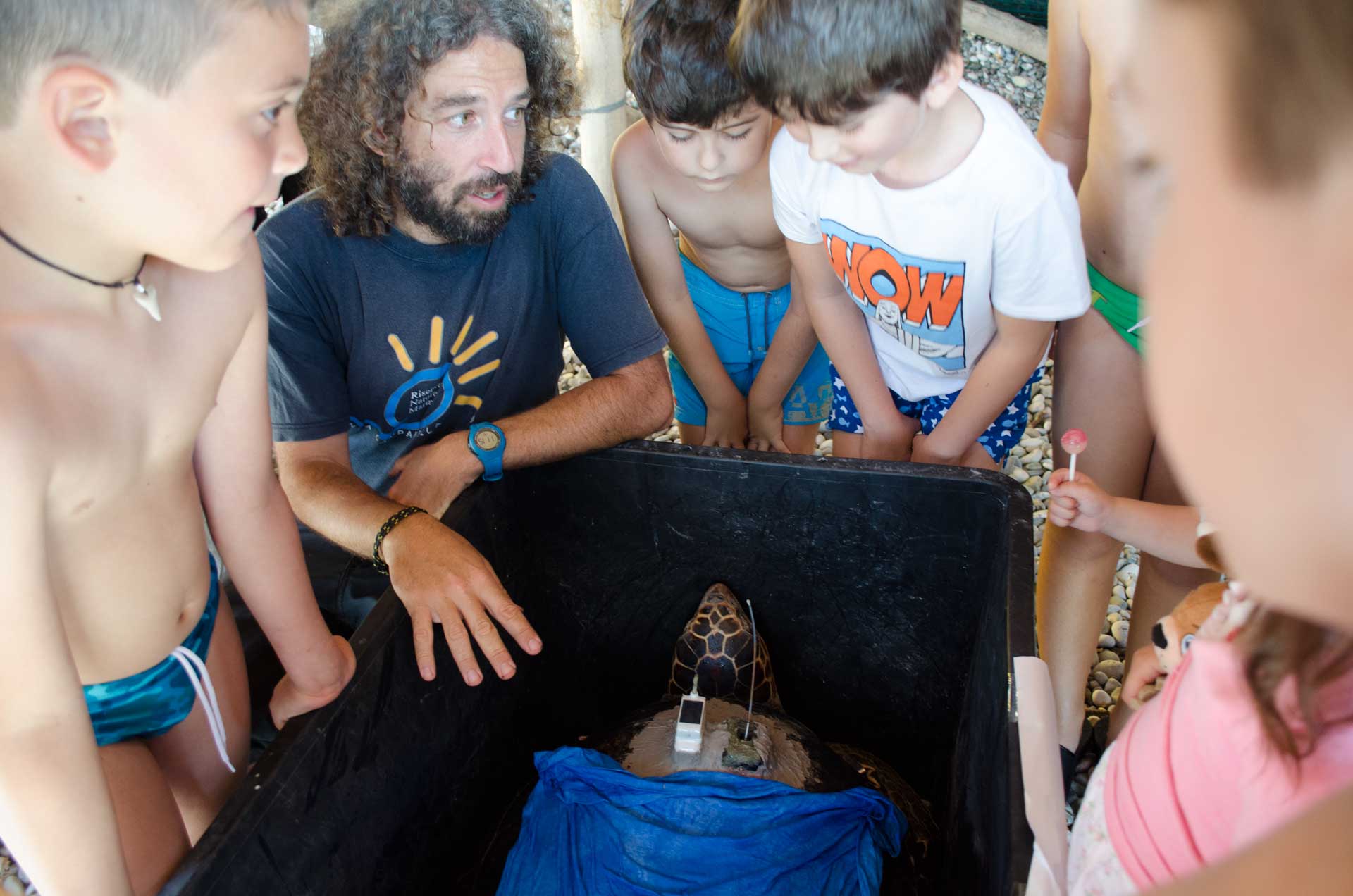
On the beach of Maria del Cantone (Naples) before boarding the boats with Marco Dalla. The beach goers were very curious and approached to ask many questions. Photo © Giulia Cerratelli
After the release, we went back to the lab eager to check whether the prototype was working or not.
Unfortunately it didn’t: we haven’t received any signal from it since the moment we released the turtle. Thanks to the PTT we know that the turtle is doing well and is not far from the release site.
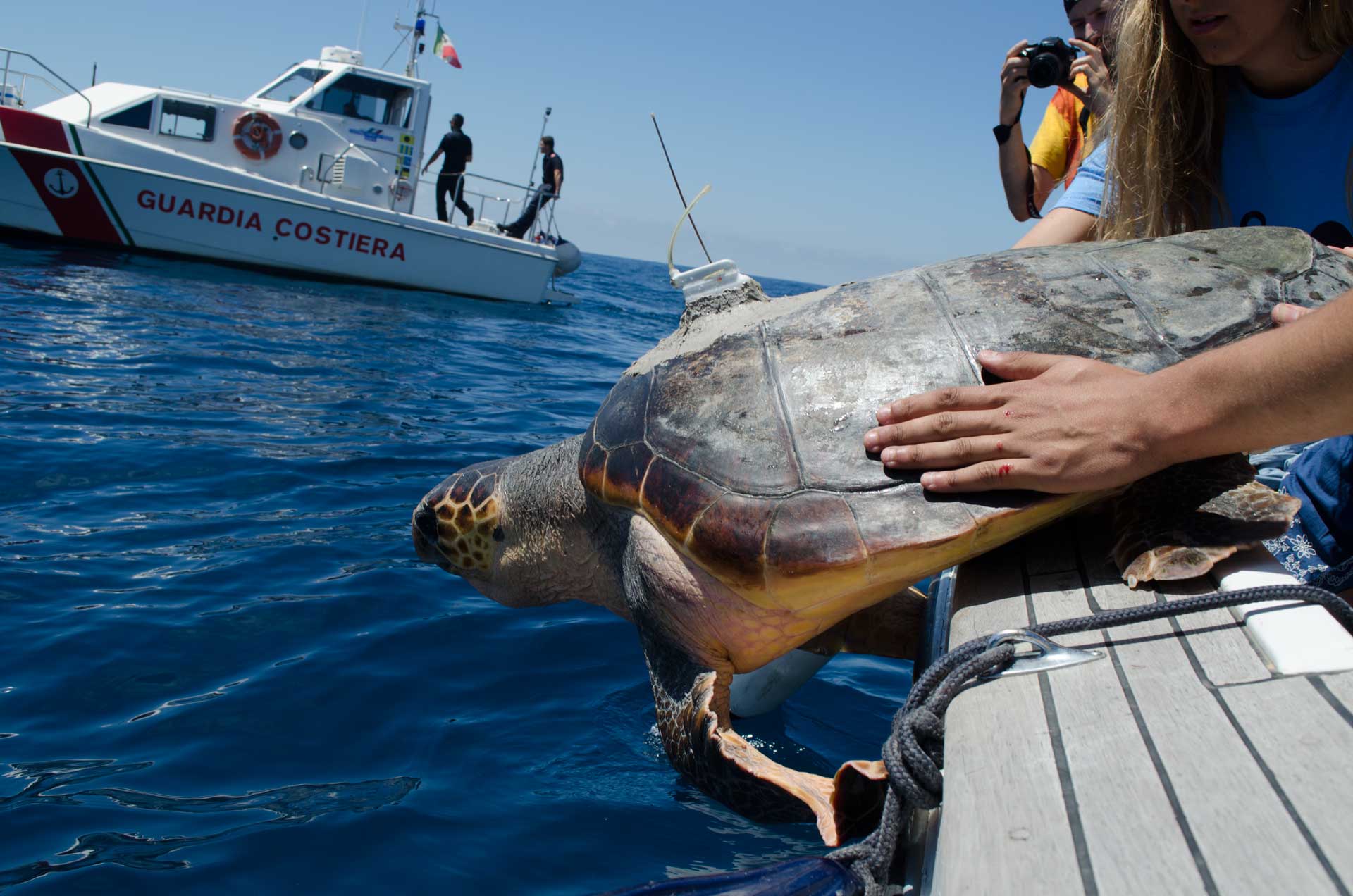
Marco Dalla being released. Photo © Giulia Cerritelli
We aren’t sure on what is going wrong with the prototype…. It could be that the turtle is staying in an area with no GSM-network, or that the turtle isn’t staying enough time on the surface to send GSM signals and, also, to recharge the batteries. We will do more tests on the second logger we still have, to detect if there is a problem of charging the instrument through the solar panels and/or if the batteries run too quickly out of power. Surely we won’t be defeated by a bad result…
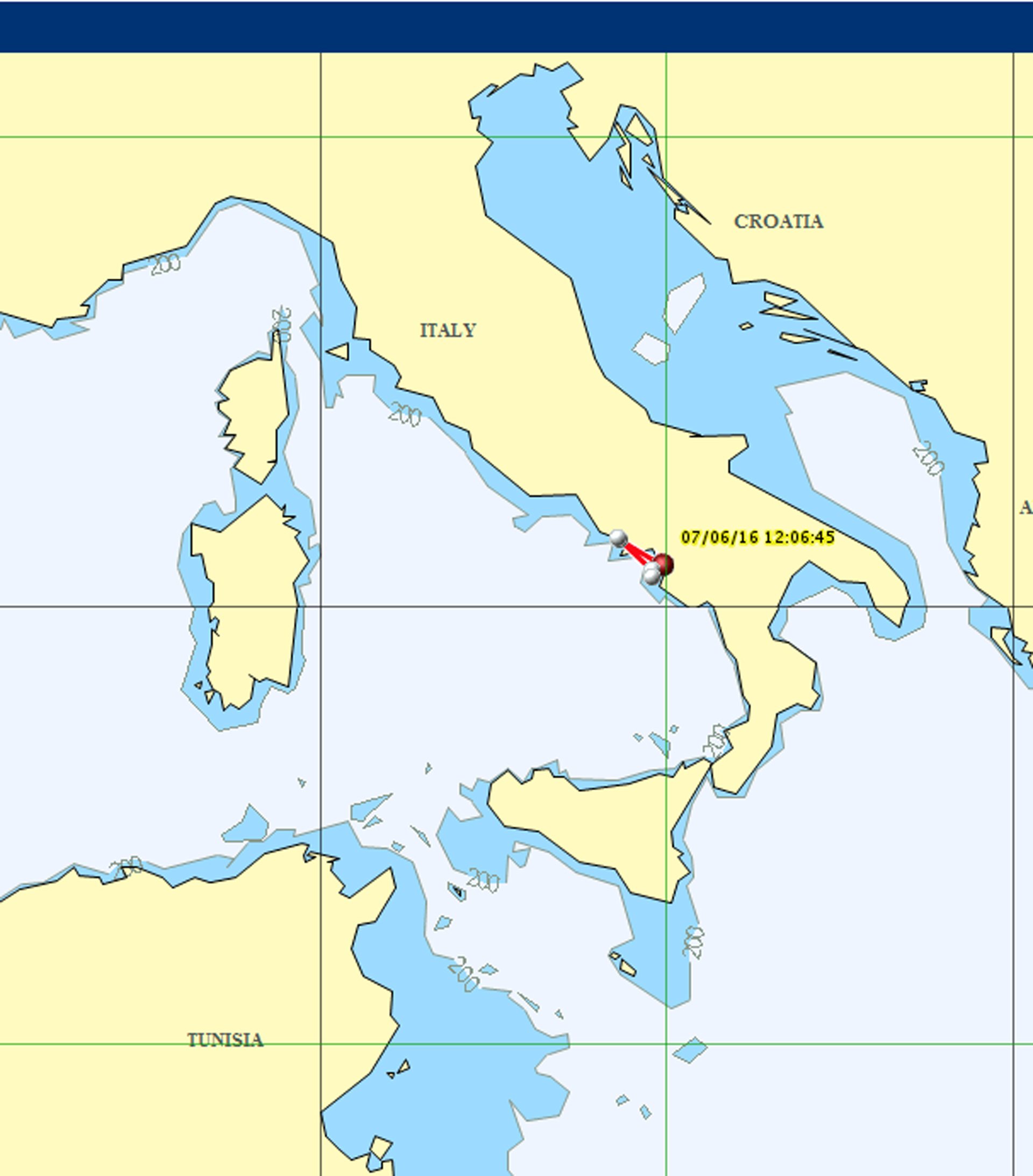
Map with turtle Marco Dalla’s Argos positions.
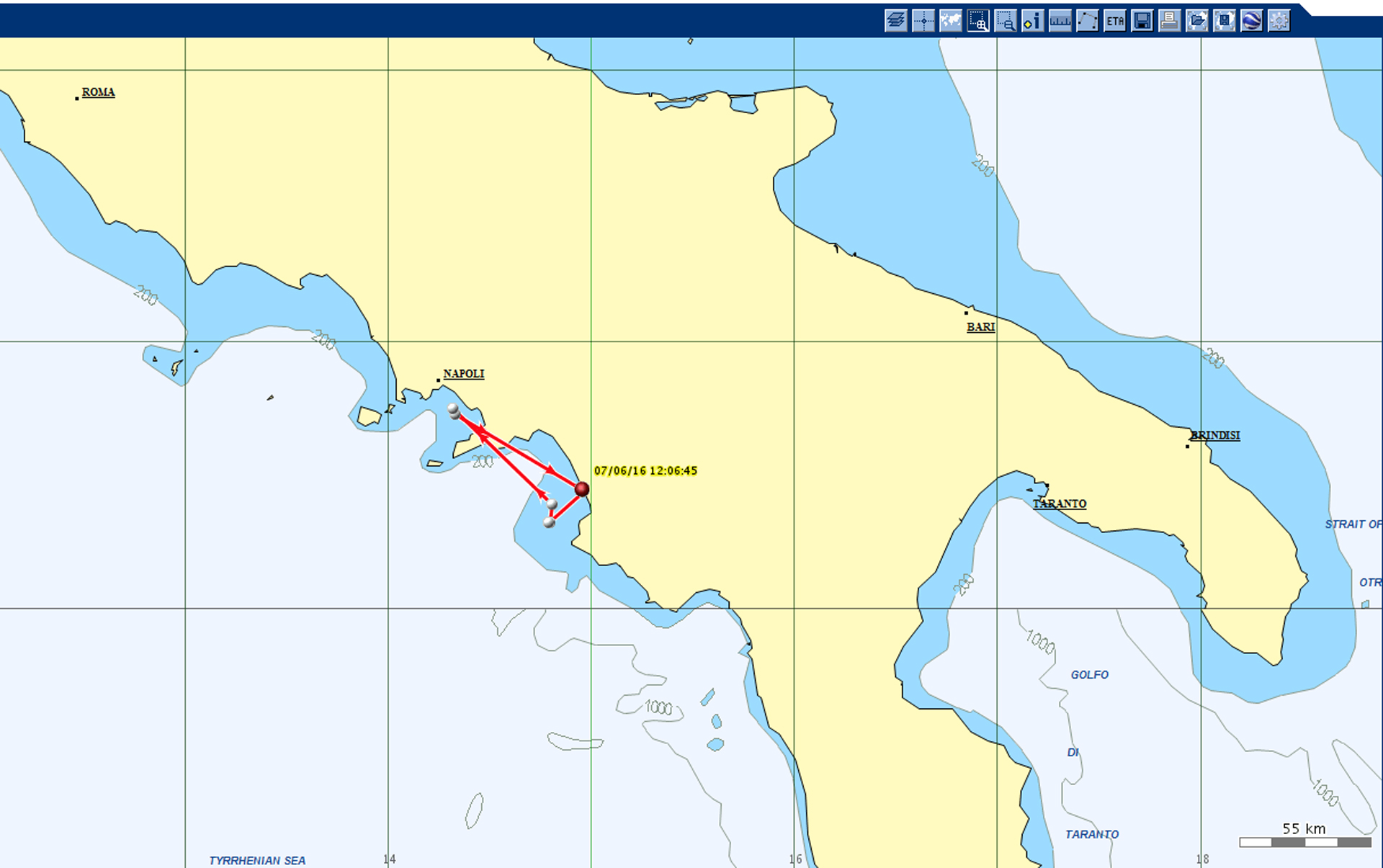
A zoomed-in map of Marco Dalla’s Argos positions.
To keep track of Marco Dalla’s movements -obtained with the Argos PTT- you can visit the website.
